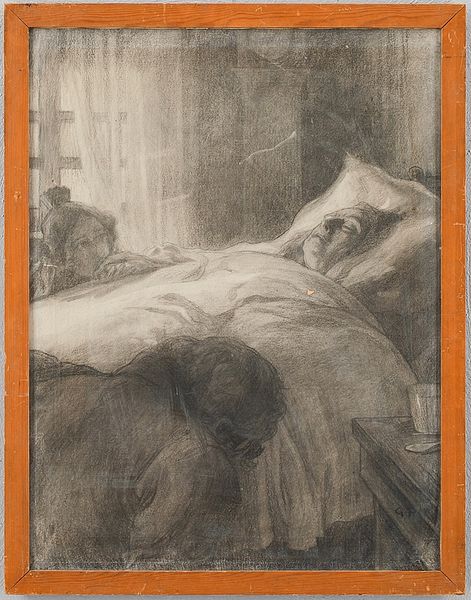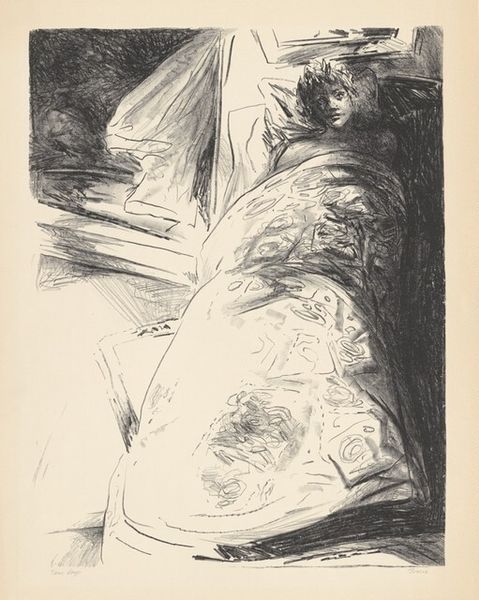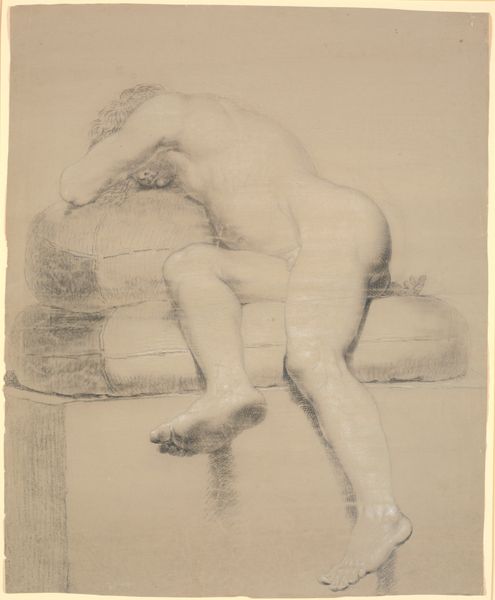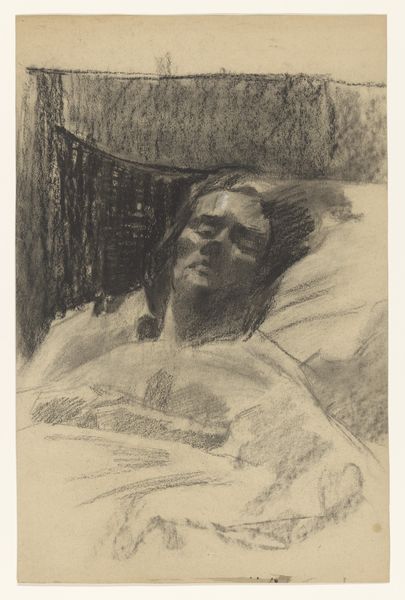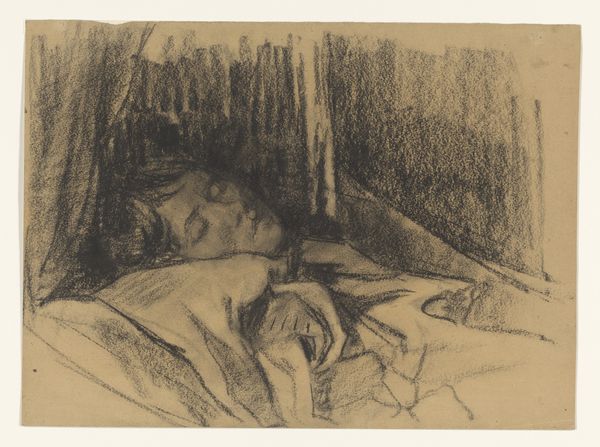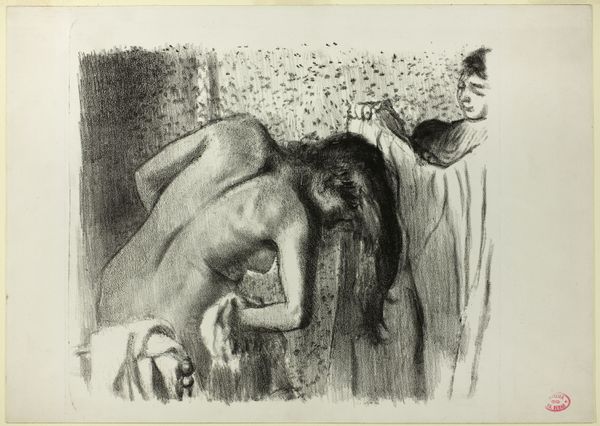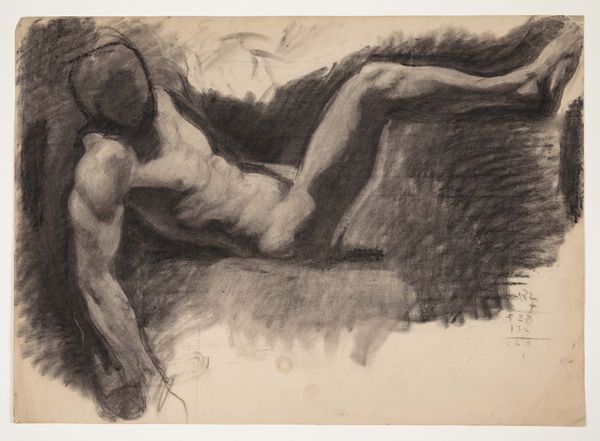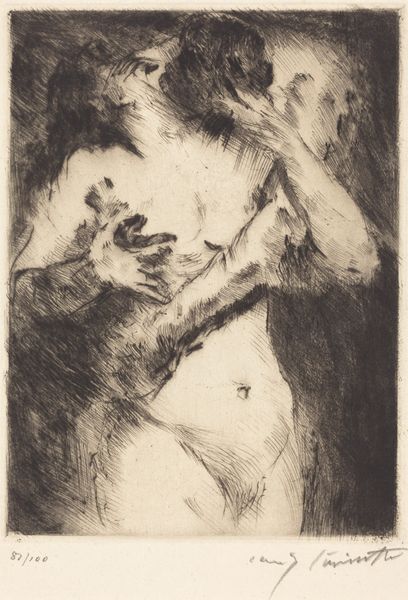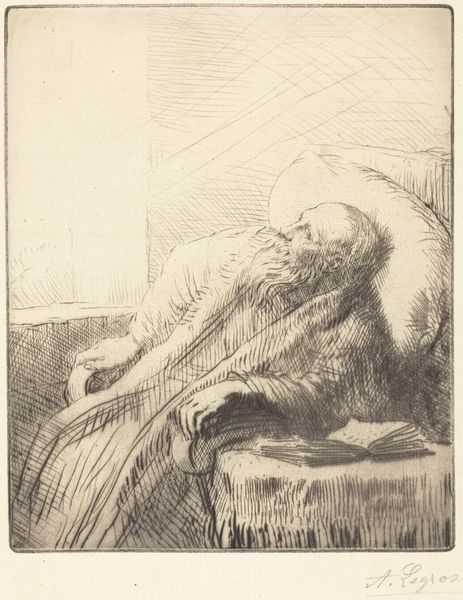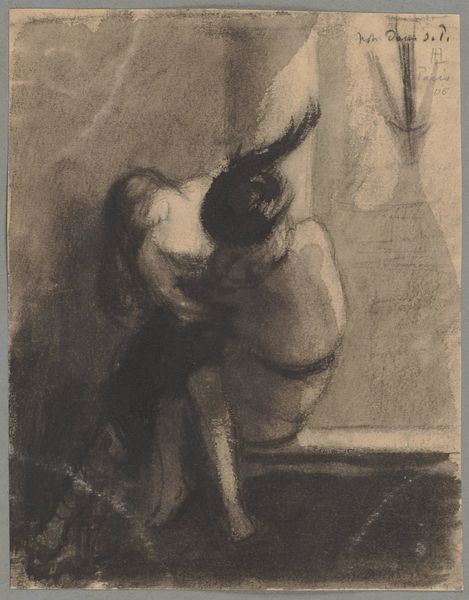
print, etching
#
portrait
# print
#
impressionism
#
etching
#
nude
Dimensions: plate: 38 x 27.7 cm (14 15/16 x 10 7/8 in.) sheet: 44.3 x 32.5 cm (17 7/16 x 12 13/16 in.)
Copyright: National Gallery of Art: CC0 1.0
Curator: Looking at this, I immediately feel a sense of profound interiority. The stark contrast and seemingly private moment...it's very intimate. Editor: Indeed. The etching by Edgar Degas, around 1885, titled "Woman Reading," pulls us into an enigmatic scene. The very medium contributes to the atmosphere. An etching like this invites an interesting discussion about visibility and voyeurism. Curator: Yes, etching offers that incredible tonal range; look at the way Degas uses cross-hatching, creating that shimmering darkness which envelops her. It feels like a shadow, or a memory even. There’s a psychological weightiness that transcends mere portraiture. The contrast between the woman and the soft light surrounding the pages feels particularly resonant—almost biblical! Editor: But consider also the constraints on women during the late 19th century. Access to literature was expanding, and reading became a means of empowerment, of intellectual agency. Isn’t that an inherently radical act depicted here, even within this supposedly intimate space? Degas frequently portrays women as passive subjects, dancers observed from afar. Yet, could this "Liseuse" present an interesting subversion of that familiar motif? Curator: It's certainly a far cry from the performative nature of his ballerinas. Her nude form becomes almost incidental; secondary to the act of engaging with the written word. But isn't the artist subtly contrasting her vulnerable pose to her act of intense concentration—the book serving as an active form of protective armor? A signifier of the human search for both shelter and light within ourselves... Editor: Possibly, or even a reclamation. Maybe the work subtly argues against her body's representation as solely an object of visual consumption? Regardless, it opens questions around gender dynamics within impressionist art. The scene resists any definitive readings which, I believe, continues to speak volumes, so many years later. Curator: A visual meditation between openness and obscurity—that is what remains with me most after this brief encounter. Editor: For me, it provokes vital discourse on the complexities of power, particularly within artistic representation itself.
Comments
No comments
Be the first to comment and join the conversation on the ultimate creative platform.

